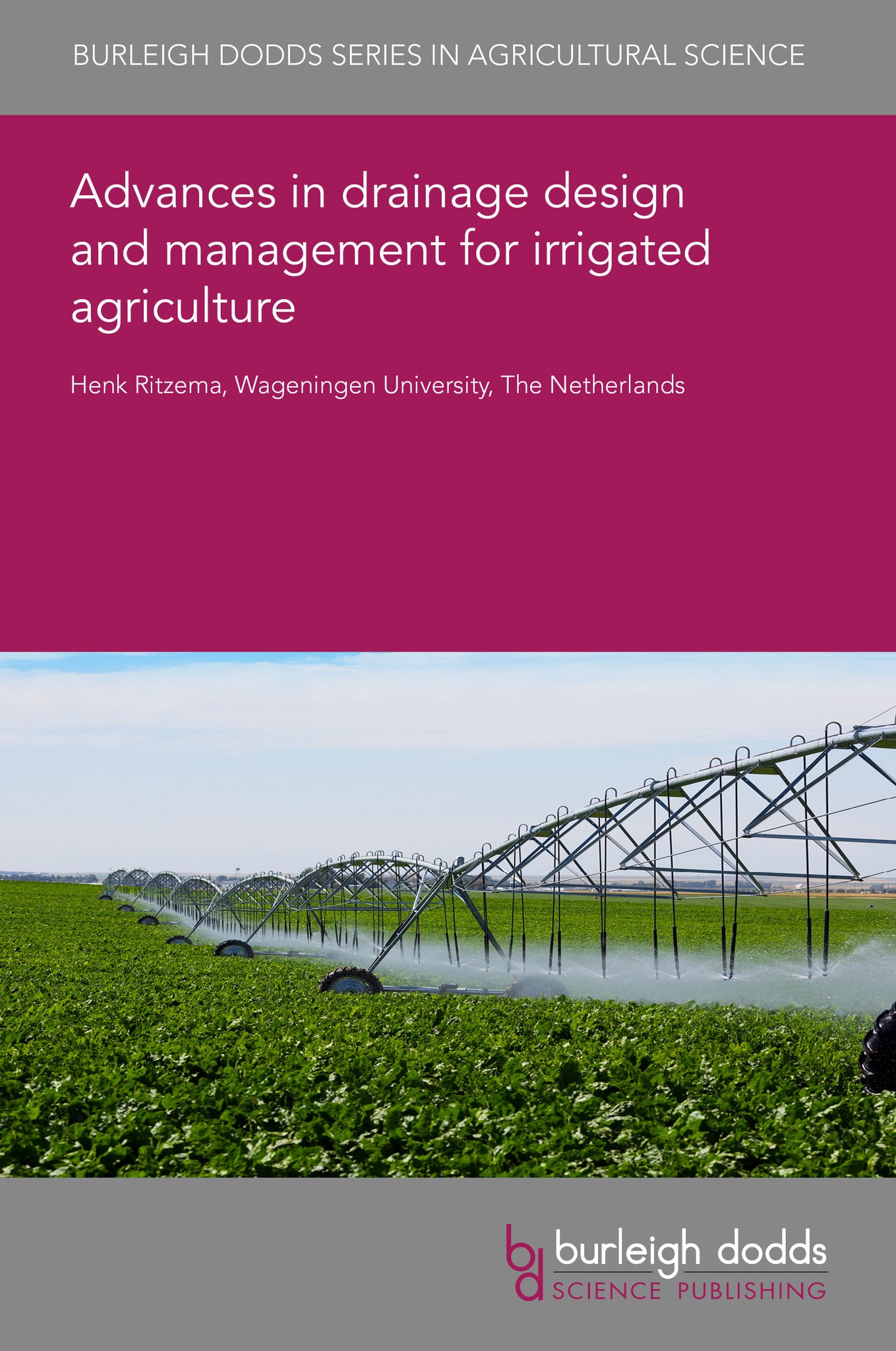We're sorry. An error has occurred
Please cancel or retry.
Advances in drainage design and management for irrigated agriculture

Some error occured while loading the Quick View. Please close the Quick View and try reloading the page.
Couldn't load pickup availability
- Format:
-
10 June 2024

Investments in drainage in irrigated agriculture are lagging well behind investments in irrigation. As a result, salinity and waterlogging problems now affect about 10–16% of these irrigated areas. To combat these problems and to cope with gradual changes in land use and a changing climate, the role of drainage has changed from a single-purpose measure for controlling waterlogging and/or salinity to an essential element of integrated water management under multiple land use scenarios. To give drainage its appropriate role in agricultural water management in irrigated agriculture, the current advances in drainage design and management are focussing on (i) creating more control, (ii) reducing the environmental effects of drainage, (iii) developing new materials and (iv) adapting the organization of drainage water management to increase farmer participation. In this chapter, these advances in drainage design and management are discussed with a focus on Egypt, a country with one of the largest drainage practices in the world.

TECHNOLOGY & ENGINEERING / Agriculture / Irrigation, Irrigation and water management, TECHNOLOGY & ENGINEERING / Agriculture / Agronomy / Crop Science, TECHNOLOGY & ENGINEERING / Agriculture / Sustainable Agriculture, TECHNOLOGY & ENGINEERING / Agriculture / Agronomy / Soil Science, Sustainable agriculture, Agricultural science, Agronomy and crop production

- 1 Introduction
- 2 Advances in drainage design and management for irrigated agriculture
- 3 Case study: modernization of the drainage design and management in Egypt
- 4 Conclusion and future trends in research
- 5 Where to look for further information
- 6 References



